
Is a Heated Freestanding Bathtub Worth It?
In recent years, the bathroom has evolved from a purely functional space to a sanctuary of relaxation and rejuvenation. One
Tile is a common compliment to a freestanding tub, but it is not a necessity. Almost any wall material works well with a freestanding tub so the choice will come down to your tastes and preference. Let us look at the benefits of tile for your freestanding tub and explore other options on the market as well:
Tile serves two primary purposes, mainly aesthetic and protection against backsplash. Tile provides color and designs that help complement the mono-color of a traditional bathtub. It also protects your bathroom walls and flooring from outside contaminants such as dust and debris, but most importantly, moisture. When choosing a tile material, you want to choose one that can handle temperature spikes and is highly durable to ensure maximum protection for your tub.
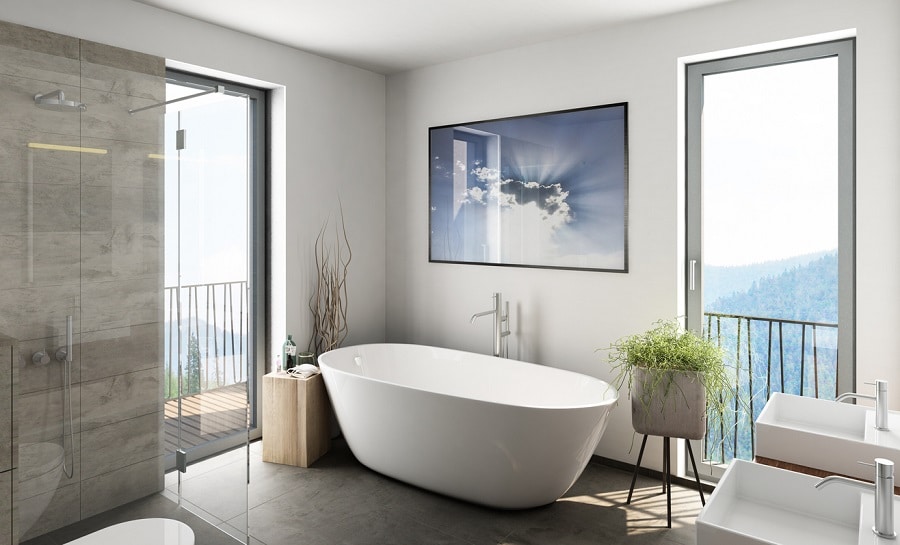
So what tile pairs best with your freestanding tub? This answer will depend on the space’s aesthetic, but in general, all of the following tiles work well with modern and classic designs.
Tiles made from ultra-heated clay, Ceramic remains a popular choice as it is very affordable, comes in a wide diversity of colors, can fit almost any pattern or design, and have high water resistance when sealed. These tiles are appropriate for the bathroom as the glazing process helps to add a protective layer to the tile, making it more resistant to stain and water penetration.
Glass tiles are made of thin glass with a translucent glaze. Their translucent qualities allow them to be paired with any color and design combination you choose for a vibrant aesthetic. They are easy to clean, eco-friendly, and have a zero percent water absorption rate, making them ideal for the bathroom. However, they are quite expensive, both for the material and the labor involved. Hiring a professional for glass installation is highly recommended as the material is quite fragile and susceptible to scratching.
A natural stone that has a fibrous appearance with a white, tan, or cream color, travertine is incredibly popular due to its high durability. It’s earthen appearance makes it great for modern bathroom designs, elevating them with a dignified look. Travertine is also on the mid-range of the pricing scale, meaning that it’s a solid choice if you want natural stone in your bathroom but can’t afford something more expensive like Granite or Marble. However, the material will need to be properly sealed consistently to protect it from moisture, otherwise the material may degrade over time if not properly cared for.
Similar to ceramic, porcelain tiles are made by firing the material at high temperatures until it hardens. Unlike Ceramic, Porcelain is significantly denser, meaning the material is more durable as there is less surface area for water or outside elements to interact with it. The primary benefit of porcelain tile is the wide range of design options, as they can mimic other materials such as marble, granite, and wood, making them visually indistinguishable. However, porcelain tiles can be pretty pricey, and while they are more durable than ceramic, they can be heavy and brittle, so it is recommended that you hire a professional for installation.
An igneous rock with elements of quartz, silica, and alkali, giving it a wide range of appearances ranging from more earthen tones to darker volcanic rock. Granite fills diverse styles and colors ranging from black, grey, brown, pink, blue, or green. Granite has a stunning, luxurious aesthetic and is among the most durable flooring. However, remember that Granite is one of the most expensive materials on the market, and the material is incredibly heavy, making it difficult to install. After installation, granite must be periodically sealed and cared for to prevent water or moisture penetration, making it a very hands-on material.
Marble results from limestone or dolomite that undergoes the metamorphic process, resulting in characteristic veins throughout the material. Like Granite and other natural stones, Marble is highly durable and has a vibrant aesthetic, with standard Marble fixtures being either white or black in appearance, although there are other variations on the market. Marble is a highly sought-after material for the bathroom due to its ability to withstand temperature spikes, however, this does come at a cost, as marble is one of the most expensive materials available.
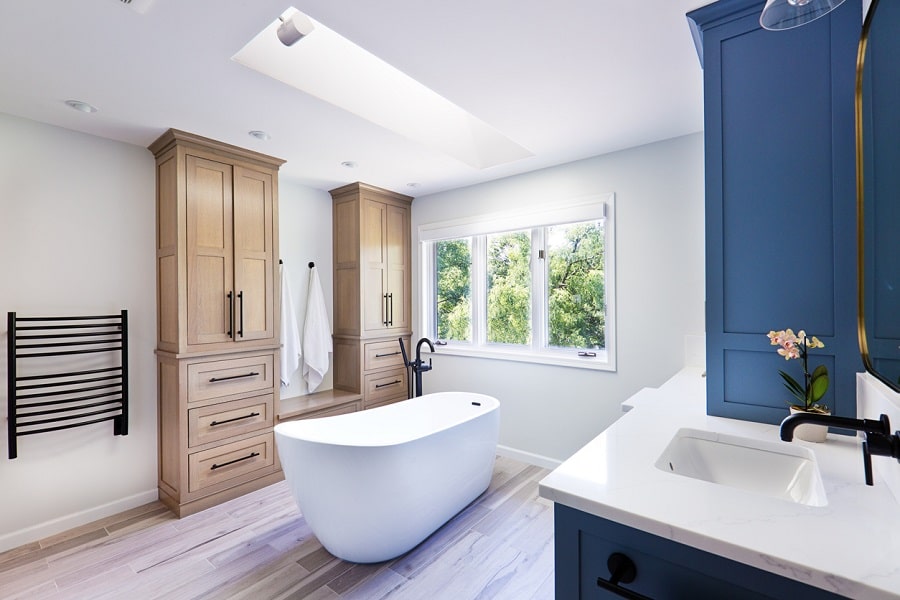
If traditional tile materials aren’t ideal for your home or bathroom situation, consider these alternatives:
Painting your bathroom wall is a great way to elevate its look without investing too much in excess materials. With the right paint choice, you can easily give your wall a luxurious or high-end look without too much investment. However, keep in mind that the paint itself will not offer a great deal of protection from the backsplash.
PVC or polyvinyl chloride panels are essentially hollow sheets of plastic bonded with adhesive. This means you have a material that can emulate the look of other higher-end materials at a fraction of the price. They are also lightweight, easy to install, and inexpensive to replace. The underside is hollow, making it resistant to traditional wear and tear, although the adhesive will break down over time and require updating occasionally. The biggest drawback to PVC panels is that the material is non-biodegradable, highly susceptible to heat, and can emit toxic gases if exposed to extreme heat.
Stainless steel walls are gaining popularity as the material is highly durable, scratch and water-resistant, and can be placed in nearly any bathroom setting. The only real drawback of stainless steel is that the material can be noisy depending on the overall thickness of the steel itself. This isn’t really an issue when you are using it as your wall material, but keep in mind that the thinner your steel is, vibrations will cause your steel to “ring”, so choose a high thickness or gauge to prevent this.
A popular alternative to natural stone, concrete provides similar benefits, but is much more durable and resistant to moisture as it does not require repeated sealing. Since it is a man-made material, it does not react to moisture and is highly resistant to the elements. The only real drawback to concrete is that it is incredibly heavy and difficult to work with. It is also highly susceptible to chips and cracks from heavy impacts. Also, when compared to natural stone, the price point is similar, making concrete an expensive alternative.
Stone resin is a composite material using small portions of natural stone that is bonded with acrylic and other materials to form something that has the look and feel of natural stone but is much more lightweight and malleable. This material is ideal if you want a material nearly identical to natural stone except for the actual feel of the material, which is it’s only real drawback if you like the feel of natural stone. Stone resin is highly durable, requires little maintenance, and comes in various colors.
Similar to PVC panels, wallpaper utilizes panels or paper that is printed on rolls that you can apply to any wall surface. This gives your bathroom almost unlimited design and color versatility. Wallpaper is inexpensive, easy to install, replace, or remove and it’s only real drawback is that it isn’t very durable and it won’t protect your wall.
Natural wood gives your bathroom a more rustic feeling, and it’s unique as the wood comes in varying shapes, colors, and textures, further amplifying the space. However, while wood is one of the most visually exciting materials on the market, it has the highest upkeep regarding price and time. Depending on the wood you choose, you must periodically seal it to prevent moisture penetration. Also, the high humidity in your bathroom can denature your wood and lead to moisture buildup and rot, so you must check your material often and replace it as needed. While there are steps to protect your material, you must dedicate significant time to its upkeep.
When choosing a wall material, here are some aspects that you should focus on to help with your decision-making:
Price point is the most critical aspect as tile or wall material adds to the aesthetic, but it may not be vital to your bathroom. You don’t want to pay a ridiculous amount just to replace or redo your bathroom wall within a few months or a year. In addition to the initial cost of the material, you will need to factor in installation and removal costs as well as those can add up fairly quickly over time, so choose a material that is ideal for your budget.
Tile and wall material has a visually arresting aesthetic that helps tie in the rest of your bathroom. When choosing a material for your wall, you want to ensure there is enough color and design flexibility to pair with any bathroom. You don’t want to be stuck with a tile or look that is only one-note or perhaps dull.
Choose a moisture- and dirt-resistant material to avoid heavy upkeep. Your bathroom wall can be obnoxious to clean and maintain, so you want a highly durable material that doesn’t need a high level of consistent upkeep; otherwise, you may be cleaning your bathroom wall multiple times a week to avoid stains or moisture spots.
While tile can elevate the space around your freestanding tub, it’s unnecessary. There are many options to pair with your freestanding tub that offer excellent visual flair without heavy investment, so see what works for you.

Eric is the founder and president of Badeloft USA. He has been the president of Badeloft’s US division for over ten years and oversees all marketing and branding aspects of Badeloftusa.com.
His expertise lies in small business development, sales, and home and bathroom industry trends and information.
Contact us with any business related inquiries.
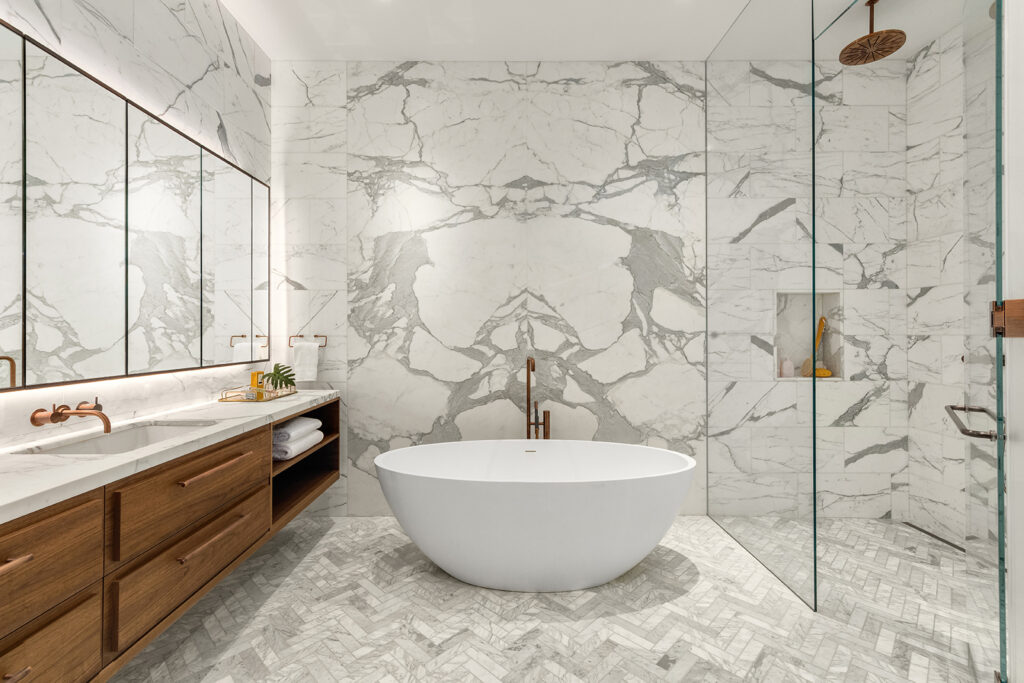
Free material samples and tub templates

In recent years, the bathroom has evolved from a purely functional space to a sanctuary of relaxation and rejuvenation. One
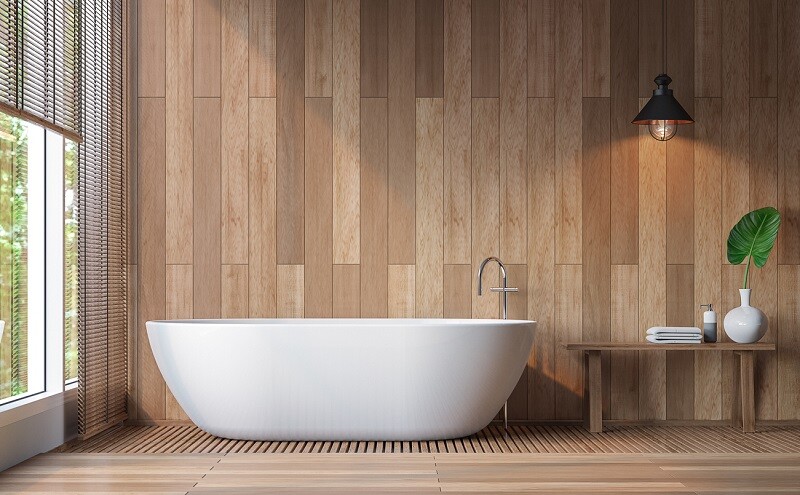
When choosing a freestanding bathtub, the size is one of the most important factors to consider. Freestanding bathtubs offer a

The bathroom is an essential aspect to any home, be it new or remodeling an older home and subsequently, adding
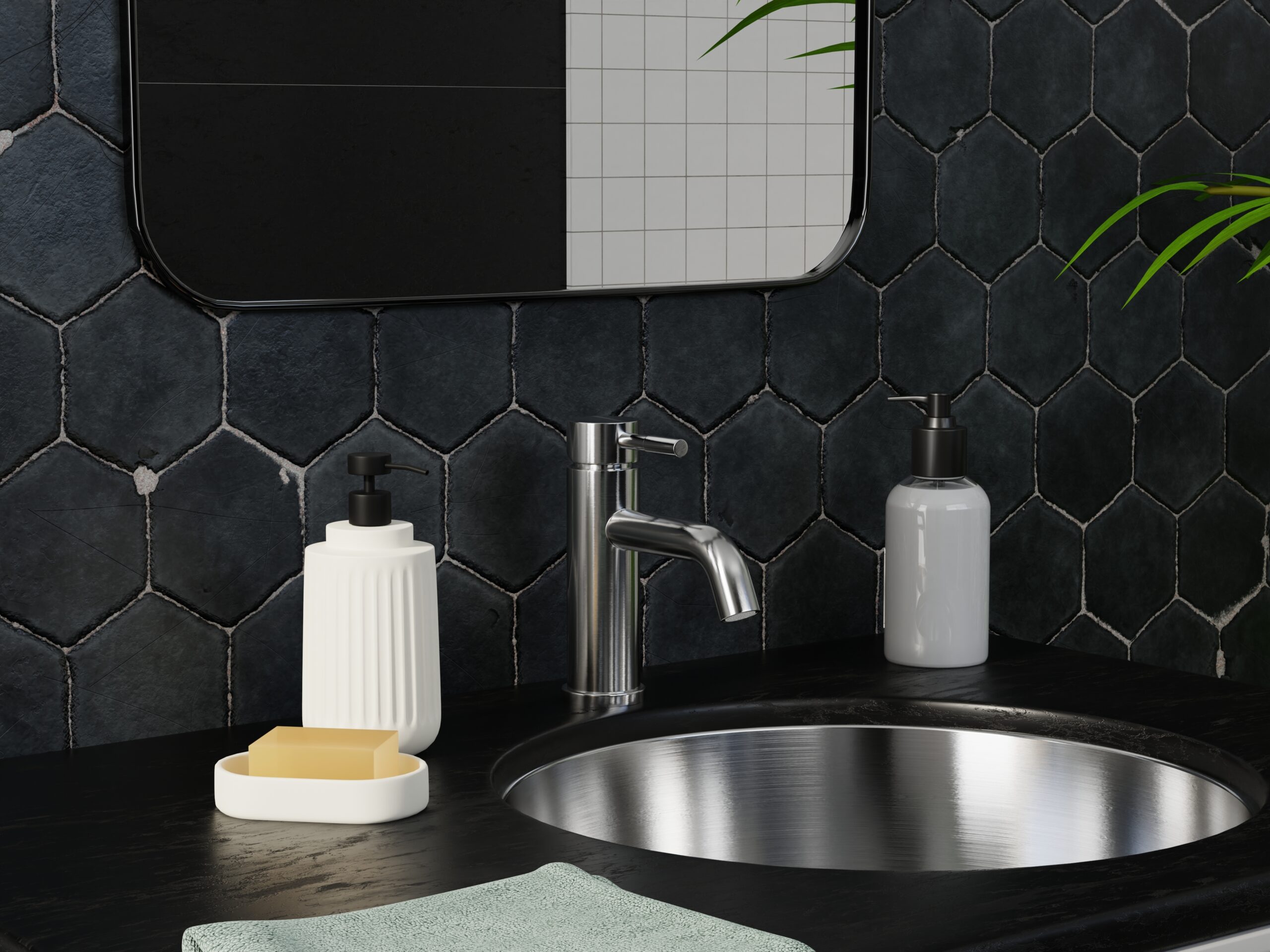
Looking to add more flair to your old bathroom? Well, a great place to start is replacing your old faucets
Fill out the form below to request a free material sample
"*" indicates required fields
"*" indicates required fields
"*" indicates required fields